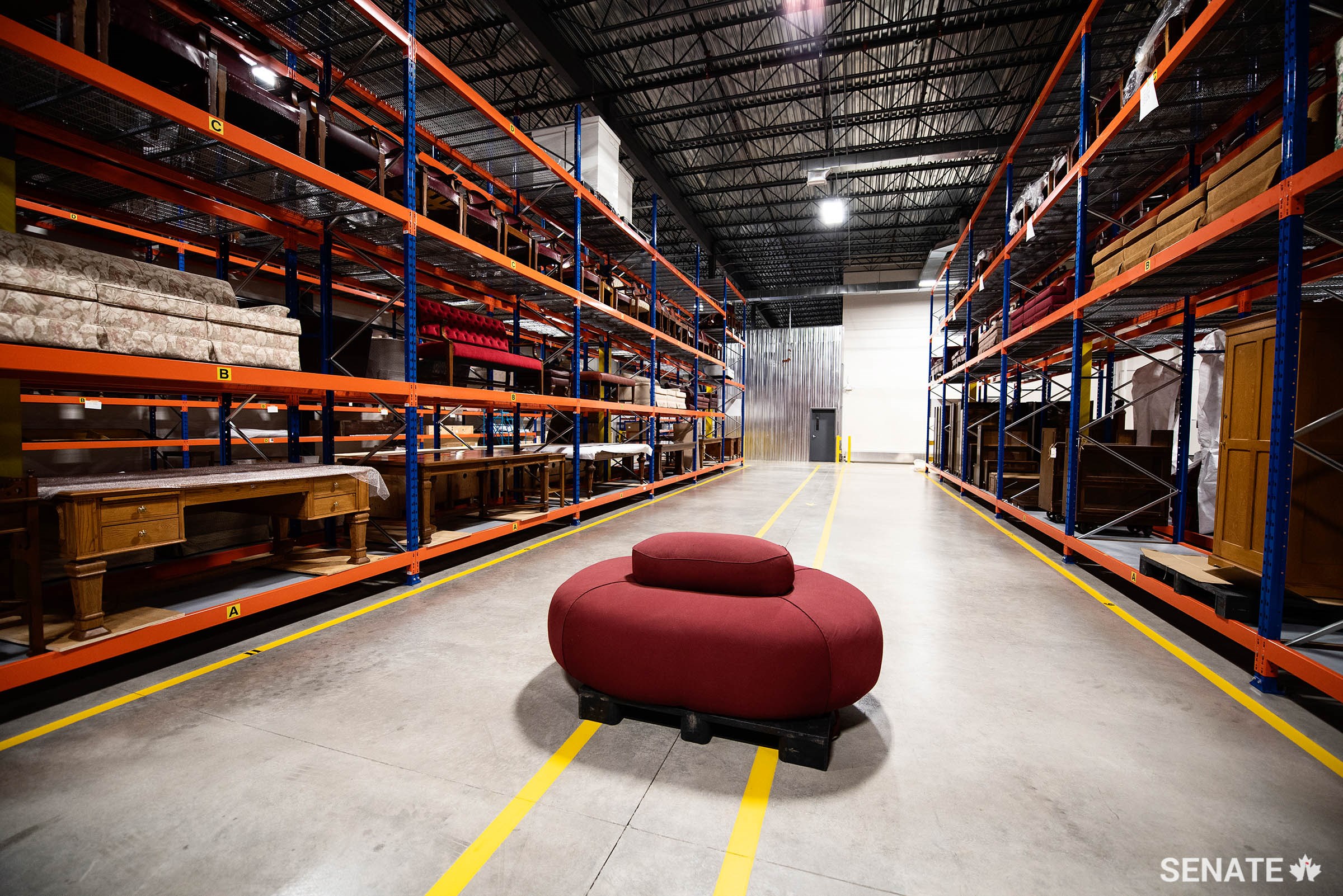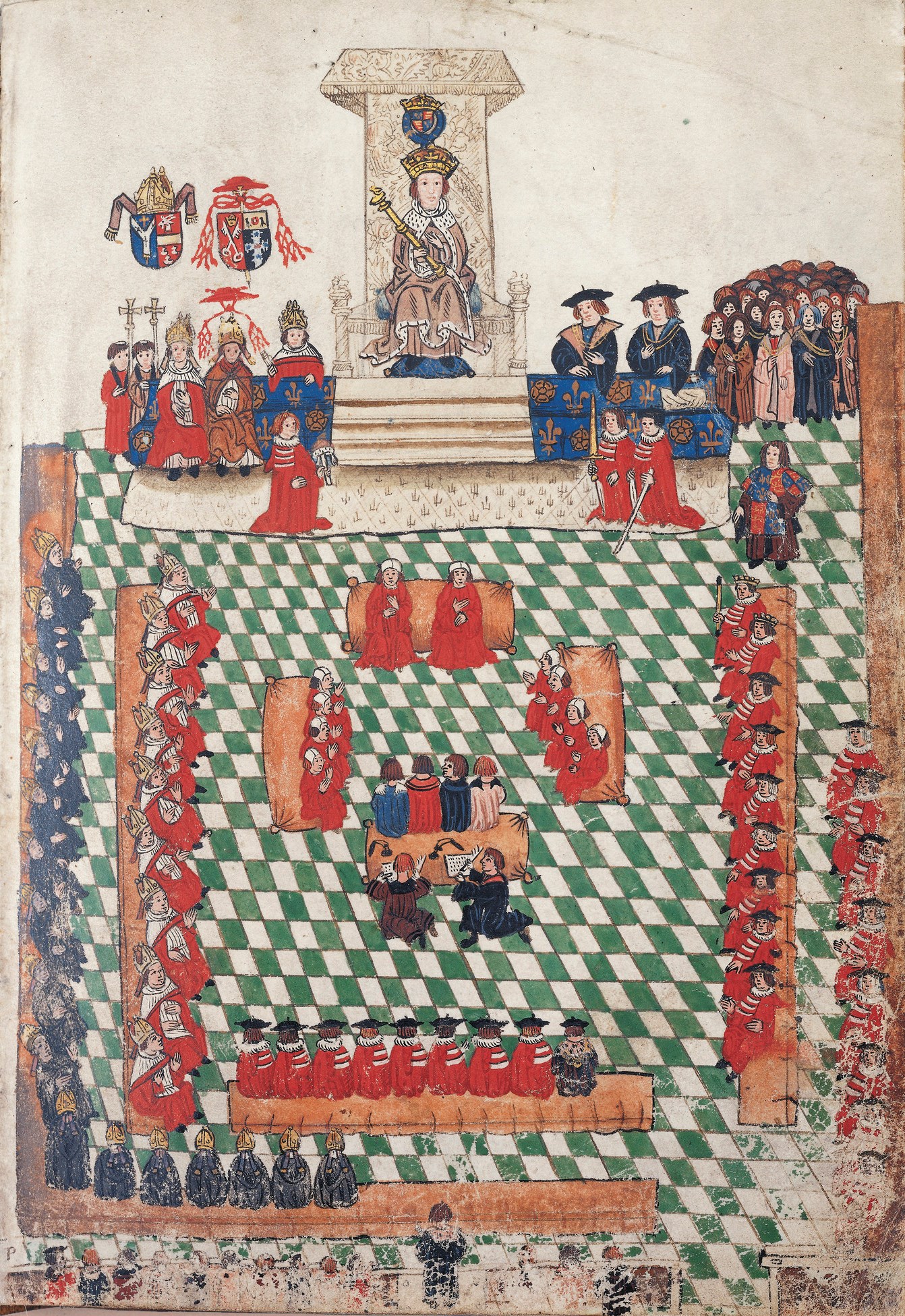How a venerable Senate icon got the sack

For seven decades, the woolsack was front-and-centre during Canada’s opening of Parliament ceremonies in the Senate — a symbol of the Red Chamber’s connections to the judiciary, the Crown and the welfare of the nation. Ironically, it was in part because of a senator that the woolsack was retired and now resides in a warehouse in Gatineau, Que.
Nowadays, if you watch a broadcast of the opening of Parliament, you’ll catch a glimpse of Canada’s nine Supreme Court judges occupying proper seats in the Senate Chamber’s centre aisle. They face the dais from which the governor general — and, on occasion, the Queen — reads the Speech from the Throne.
But until 1949, the seven judges who made up the Supreme Court sat on a large stuffed cushion: the woolsack. It was, by any standard, an unconventional piece of furniture — hard, lumpy and worn, with a rudimentary backrest, no armrests and no legs.
A long-seated tradition
The practice of Canada’s Supreme Court judges sitting in the Senate for the opening of Parliament is rooted in British parliamentary tradition. There, judges appointed to the United Kingdom’s House of Lords formed a committee that served until 2009 as the country’s court of final appeal — its de facto Supreme Court.
At the British Parliament in Westminster, two woolsacks remain: one for the Lord Speaker (the equivalent of Canada’s Senate Speaker) and one, known as the Judges’ Woolsack, for the Law Lords.
Woolly beginnings
The use of a woolsack dates back centuries.
King Edward III, who reigned in the 1300s and presided over the separation of the House of Lords and the House of Commons, decreed that his chief minister, the Lord Chancellor, should sit on a wool bale when Parliament was in session. This was not a snub — it symbolized how important the wool trade was to England’s economy in the Middle Ages.
In the following centuries, Parliament grew to represent a broader swath of Britain’s population and judges joined its ranks. To demonstrate that they remained impartial, they took their seats on a woolsack in the centre of the House of Lords, rather than on the party benches to the left and right.
The Senate’s woolsack served its own symbolic role for decades but, by the time Canada was emerging from the Second World War, it had outlived its usefulness. The expanding authority of Canada’s Supreme Court played a part, as did a concerted campaign by a determined parliamentarian.
‘A thing of the past’
The Supreme Court was granted new powers in 1949. From its inception in 1875, it had served as the highest appeals court in Canada but its decisions could still be appealed to the Judicial Committee of the Privy Council in Britain (which famously declared women to be “persons” in 1929). In 1949, the Supreme Court became the court of last resort in Canada, severing Canada’s last formal ties to Britain’s House of Lords.

At the same time, Quebec MP Jean-François Pouliot — who later became a senator — spearheaded a campaign to abolish the woolsack.
Mr. Pouliot, a renowned wit and compelling orator, described the woolsack as a relic of medieval England with diminishing relevance to Canada.
Its awkward design, he argued, forced the judges to sprawl “like urchins.”
“The first thing to do, as soon as this bill respecting the Supreme Court as a final tribunal is passed,” he said in the House of Commons in 1949, “is to dispense with the woolsack.”
Seven years later, as a senator, he declared the woolsack “a thing of the past.”
“It would have to vanish as soon as appeals to the Privy Council from Canada were no longer heard and the Supreme Court became our final tribunal. The thing was done; and I am told that the woolsack is now kept in the dusty attic of this chamber, where it is slowly being eaten by moths.”
Mr. Pouliot may have been misinformed. The woolsack — very much uneaten — is in the capable hands of the Senate Heritage and Curatorial Services team, which recently uncovered a century-old secret in the Senate Seniority Board. The final fate of the woolsack, however, remains to be seen.
The fate of judicial posteriors is much less in doubt.
The opening of Parliament in 1953 boasted the country’s first Canadian-born governor general, Vincent Massey, and a newly independent Supreme Court. Newsreel cameras panned over nine Supreme Court judges sitting comfortably on conventional hard-backed chairs.
Mr. Pouliot must have been relieved.
So, likely, were the judges.






